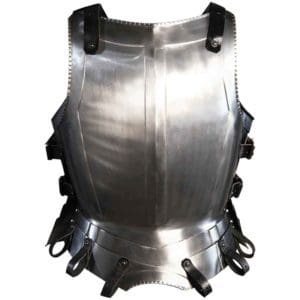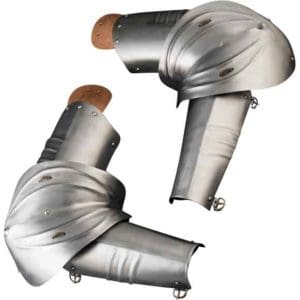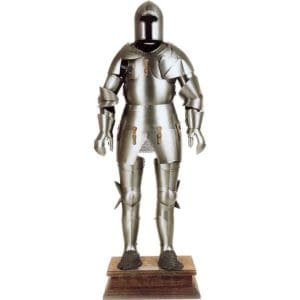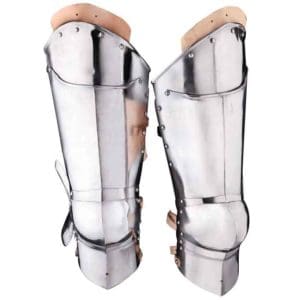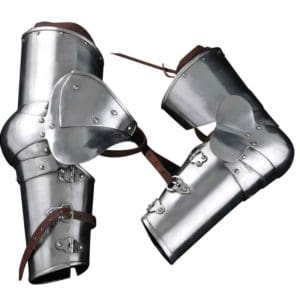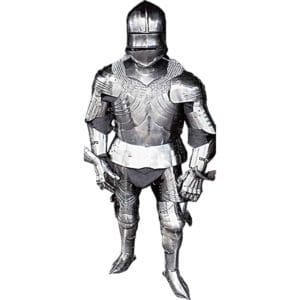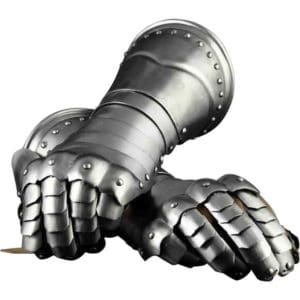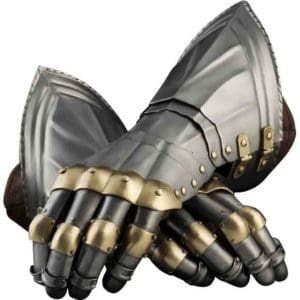What is Gothic Armour?

Ever wonder what is gothic armour? In this post, we look at the background and design of medieval gothic armour. We focus on the history of this style of armour and compare it to its contemporaries. Let’s head back to the 15th century and look at this distinctive style of armor.
Background
Gothic armour comes from the German-speaking areas of Europe at the time. Since Germany was made of various kingdoms and cities at the time, the area spans modern-day Austria, the Tyrol region of Italy, Germany, Poland, and other areas. Its best-known manufacturers came from Augsburg, Innsbruck, Nuremburg. The Helmschmid, Seusenhofer, Kolman, and Desiderius were some of the best-known families of armourers of Gothic armour.
This style of armor gets its name from the lines and decorative elements popular in Gothic architecture of the time. Gothic armour had a contemporary in Italian armour called Milanese armour. There were differences between the styles of armour. These differences came out of existing regional and national differences in regular clothing. They began to be expressed in armour during the late 14th and into the 15th centuries due to the recent developments in plate armour. Plate armour had a larger surface area during this time period than previous ones. Gothic armour would come to end towards the beginning of the 16th century with the advent of Maximillian armour, which combined elements from Gothic and Milanese armour.
Design Features
Gothic armour had distinctive elements that set it apart from Milanese armour. Gothic armour favored symmetry, elegance, and a slender appearance. This contrasts with the asymmetrical and rounder look of Milanese armour. Also, Milanese armour favored additional reinforcement on the left side of the armour as a practical choice. The left side was the first place for attack and thus benefited from extra plating on the left side. This additional reinforcement added to the asymmetrical appearance. Meanwhile, gothic armour often featured lines, grooves, and embellishments with gilt borders. These ridges and grooves often mimicked the folds common to German clothing of the time.
Another popular design feature was a two-piece construction for the breastplate. There would be an upper portion with at least one outer plate attached on the front. By the 16th century with the advent of Maximillian armour, this two-piece design would fade in favor of a single plate for the breastplate.
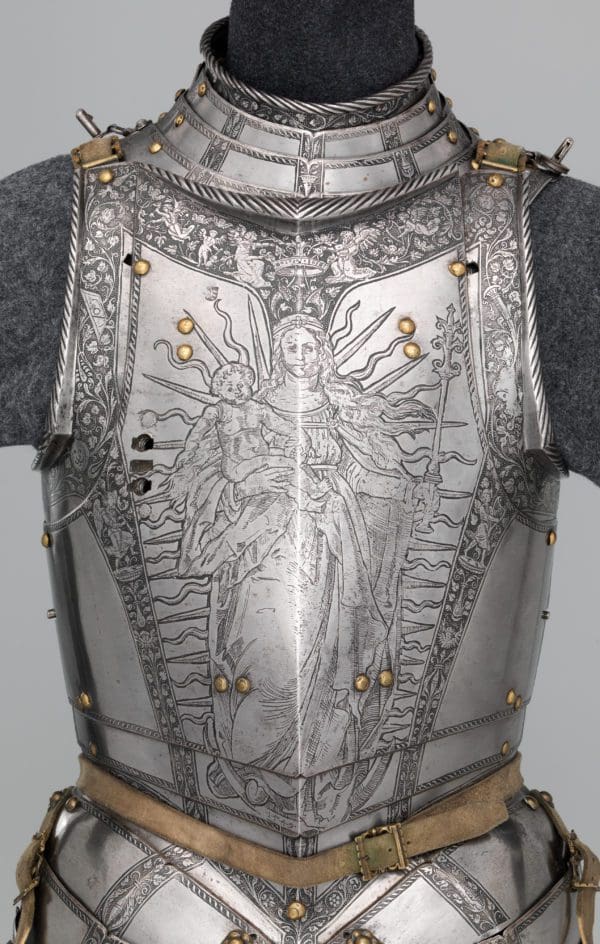
Historical Examples
This breastplate from the armour of Emperor Ferdinand I features that multi-plate design. It has layers of plates creating the overall breastplate of the armour. It is highly decorated with embellishments.
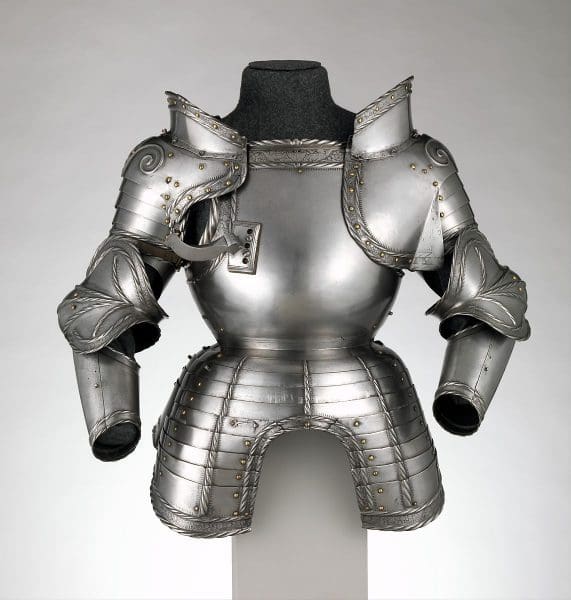
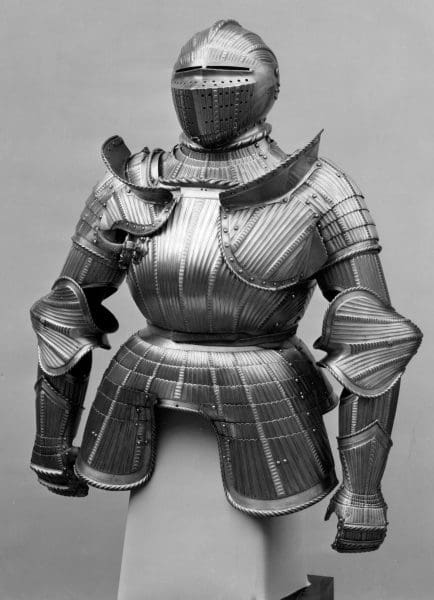
These two cuirasses are of German make from the 16th century. The one on the left is from 1524 and the one on the right is from 1535. Both pieces showcase the single-plate design common to this time frame. They also are great examples of how the Milanese style was incorporated into the gothic style. The 1524 piece has the rounded shape and asymmetry of the Milanese style. Meanwhile, the 1535 armour also features an asymmetrical look with ridges covering the entire design.
When it came to gothic armour, the two-piece breastplate was a staple look in addition to the sallet helmet. The sallet helmet was a popular choice for capping off a suit of Gothic armour. Originally worn with a bevor underneath, this helmet style would continue through the end of the 15th century.

This sallet helmet is circa 1490-95 and was for Emperor Maximillian I. This piece by Lorenz Helmschmid features a design from the last few decades of the sallet helmet before the beginning of the close helmet. It exemplifies the pointed rear and rounded top of a sallet helmet.
Comparison of Styles and Designs
To illustrate the specific features of gothic armour, we are going to compare different products to showcase the different aspects of the armour. For example, the Gothic Sallet Helmet With Bevor is a great example of a sallet with a bevor. While the sallet protects the head and back of the neck, the bevor protects the front. Meanwhile, the Maximillian Helm exemplifies the helmet design of the 16th century while also keeping the fluted ridges popular from gothic armour. The 15th Century German Cuirass has the popular multi-plate breastplate design in contrast to the single-plate Kaspar Steel Cuirass that takes its inspiration from the 16th and 17th centuries. These pieces help to illustrate the differences between gothic armour and later pieces of armour.
When it comes to comparing German and Italian armour from the 15th century, we have a few pieces that help illustrate their differences. The 15th Century German Arm Armour has ridges adorning it, whereas the Milanese Arms have no ridges adorning the plates. This pattern of ridged decoration continues with the 15th Century German Style Gauntlets with Brass in contrast to the 15th Century Italian Style Gauntlets that we offer. Again, ridged detailing is more prevalent with the Gothic Leg Armour versus the 15th Century Avant Milanese Legs where a more streamlined design is visible. For a complete ensemble that showcases the differences between gothic and Milanese armour, be sure to check out the Gothic Suit of Armour and the Milanese Full Suit of Armour. These pieces showcase the distinctive style of gothic armour and its contemporary rival.
Summary
If you are wondering what exactly qualifies a piece of armour as gothic armour or styled like gothic armour, we hope that this article has helped you. We looked at the background and popular features of gothic armour. If you want to dress up in this style of armour, we have plenty of pieces for you to choose from.

